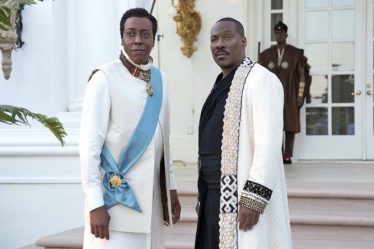
Flee first entered into the cinematic fray at 2021 Sundance Film Festival, where the buzz was nearly deafening, calling it one of the best films, animated or otherwise, of the year. It racked up a slew of awards starting with Sundance’s Grand Jury Prize in the World Cinema Documentary section, and going on to win Best Feature Film at the Annecy International Animated Film Festival. NEON picked Flee up for distribution way back in January. Flee was flying high when it landed on the schedule at TIFF, and unsurprisingly has continued its streak of positive word of mouth. All this ballyhoo was for good reason. Danish writer/director Jonas Power Rasmussen’s documentary Flee about Afghan refugee Amin, his arduous journey getting to Denmark, and how that experience colors his current life, is destined to become a shining example of great indie animation. It may be painful to watch Amin go through the horrors he describes, but it is also an incredibly uplifting, inspiring story that will leave its viewers with a powerful feeling of hope.
Amin Nawabi (a pseudonym) and Rasmussen have known each other since Amin showed up at the writer/director’s high school as a teenager. Now 36, Amin is willing to share the untold story about his 5-year journey fleeing Afghanistan in the 90s. The English version of Flee is voiced by Riz Ahmed as Amin and Nikolaj Coster-Waldau as Rasmussen, both of whom had come onto the project as executive producers earlier in the production. Created with hand-drawn animation, which allowed for more expressive, emotional visual storytelling, and archival footage from the times represented, Flee is very adult, and very engrossing. Early in the film, Coster-Waldau as Rasmussen asks, “What is home?”, to which Amin responds “Home is someplace safe.” It’s no wonder Amin both questions and finds comfort in a feeling of safety. His story is rife with near-death experiences, humiliation and degradation, and the combination of danger and bitter disappointment that came from repeated failures to escape. There’s also his toxic shame around being a gay man in a country in which, according to officials, homosexuality doesn’t exist. As Amin tells his tale, the film goes back and forth between flashbacks of his experience, and his current conflict and reticence around settling down with his partner Kasper.
The Animated Workshop approached Rasmussen asking whether he had any ideas for an animated documentary, inspiring the filmmaker to approach his friend about revealing his experience. The animation offered an additional layer of anonymity, as well as a way to capture Amin’s struggles in 80s Afghanistan. Over the course of several years, Rassmussen conducted interviews with Amin, in which his friend slowly revealed his story. Appropriate to the global nature of Amin’s story, Flee was a co-production of companies in Denmark, France, Sweden, and Norway. The result is a genre-busting blend of a documentary, an animated feature showing two distinct styles of 2D animation, and a refugee narrative that becomes something innovative and far more than the sum of its parts.
To read the Flee review in its entirety, go to AWFJ.org HERE.



